There are several concepts that fight to achieve the place of the first sense when I enter to “Diurna”, the current exhibition of the Chilean visual artist Magdalena Prado at Museum of Decorative Arts. Concept not in that academic deformation, but in what makes me nod my head, go through the space and strive to focus better to understand the balance that is felt. And no, not in a mystical sense, although it could happen to anyone being there due to the history of the place – it was a Dominican cloister until 1998 and in 2005 the last monk died there – where precisely the hall exhibition was used for praying, rest and meditation, and it is pretty easy to feel bathed and pleased by an immense sensation of calmness and the volume reduced to zero on a weekday with almost 35 degrees.
The human body is felt within the disposition of the five works or axes that confirm “Diurna”: a mantle, a cross, three stained glass windows, forms made in papier-mâché and a mono-channel video. All, except the last work in video, use the material that Magdalena has been working for more than three years, paper, material that is displaced from the substrate to the protagonism achieved through the experimental.
The artist worked for this time with black paper by submitting it to treatments that would allow the desired manipulation, and that not only embodies a formal physical desire. It turns into a sublime repetitive operation that both for her and for the spectator does succumb to the contemplative state carried by that same action.
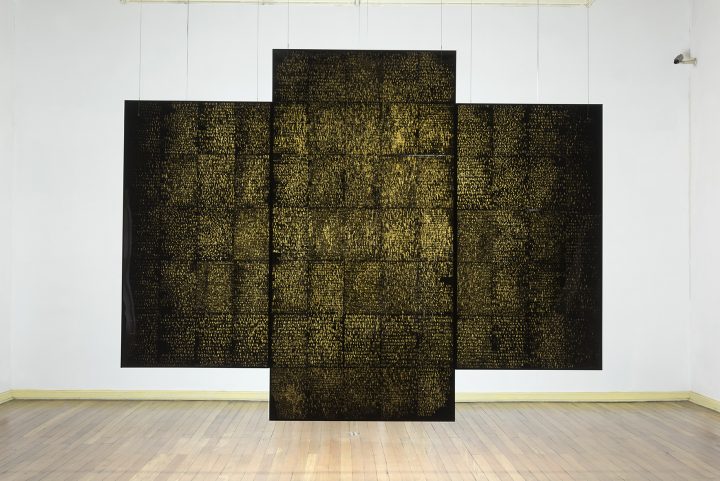
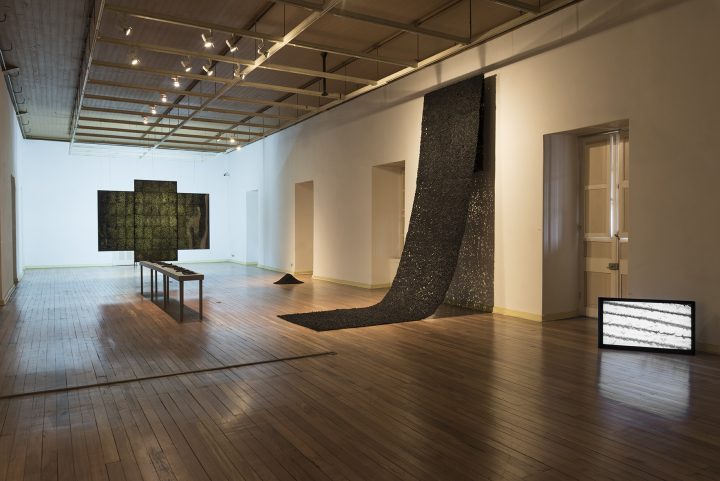
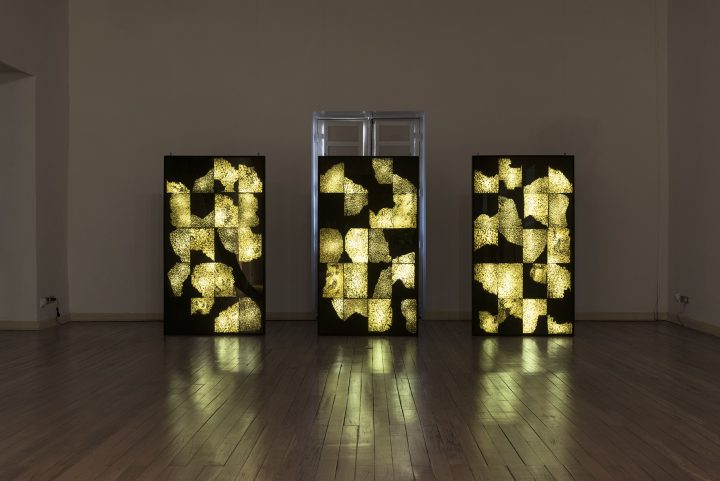
The so-called “Cross” is arranged at the end of the room, which is simply formed by three pieces of acrylic covering the sheets of paper intervened by the Prado’s tools, where the forms are presented almost by removal of the same material, removal almost neurotic that unveils a new work in contrast to artificial light, softened and framed by the natural light of the Museum. “Manto” repeats the same physical operation of transformation and the mechanical movement of repetition of material removal through soft gestures that print texture and figures on that long sheet, which is hanging from the wall as a tapestry from a previous era.
In direct opposition to that sort of altar for many, is placed “Tres Vitrales” that imitates the operation of the insistent gesture of Magdalena with the black sheet, and also framed in transparent acrylic placed in opposition to halogen tubes, but showing random organic shapes that in the artist’s words refer her to her most visceral part by reminding her of organs, thematic or studies where she wants to research later and that somehow are incorporated into the exhibition as a core.
Perpendicular to the “Cruz” and “Tres Vitrales” and along all the room is possible to see a long and thin table that evokes what could be a table of surgical instruments, where are placed and aligned “Formas de papel maché”, basic tools of almost prehistoric forms, but that could be used by the artist for their technique of material removal. It is like facing figures that can manifest what hides the worked material, which damage it, for revealing new textures that together are the pieces of “Diurna.” And so it is that in between the art pieces, on one side is placed on the floor a circular pile that contains that waste material, but let’s say better what is removed or moved for appearing what is desired or urgent.
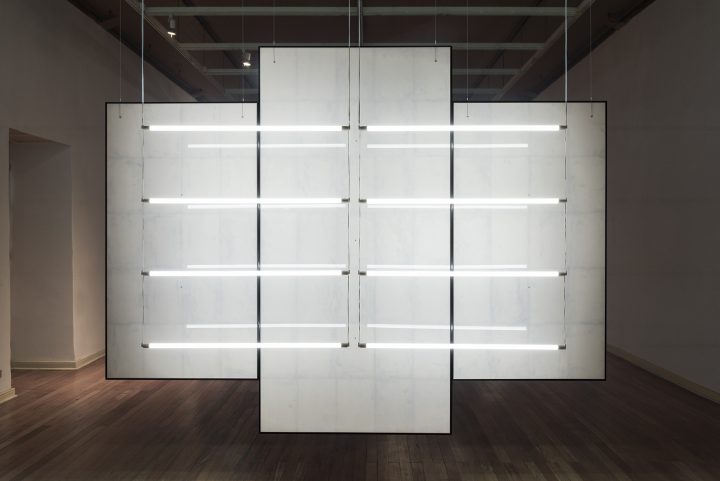
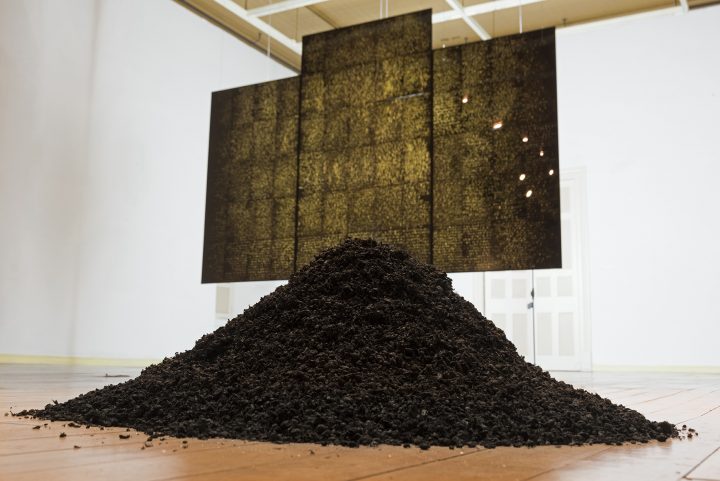
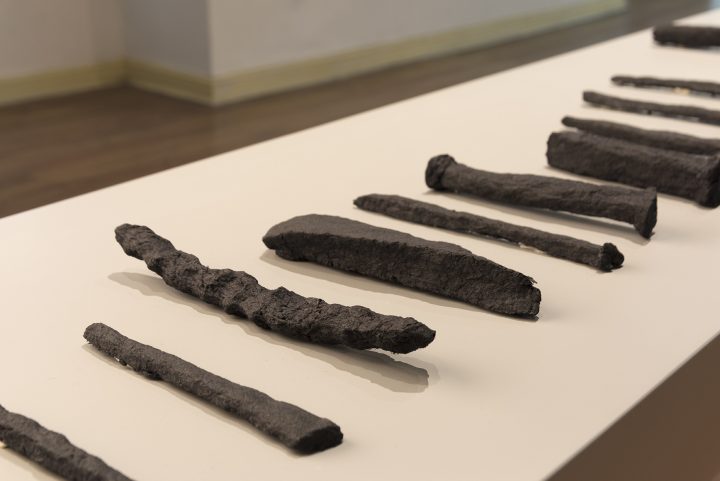
The video that formally could escape at first sight by its technique, reproduces the exercise using the organic -sand- to illustrate the maneuvers under which the pieces are configured. Noble gesture of removal in the nature, template and orderly that becomes respite and connection with the nature and the outside.
Talking with Magdalena, her first intention was to make a link between what she has been doing in the last years and the Museum of Decorative Arts of Santiago de Chile, but it is interesting to see as always a preconceived idea of a project and a space mutate because inevitably is necessary to overturn what is circulating and underlying in the creation of that time and space. Without even thinking that the place was a cloister, the maneuver that returns over and over through her hands and the paper that lead to a contemplative state, state declared thanks to the light of “Diurna”.
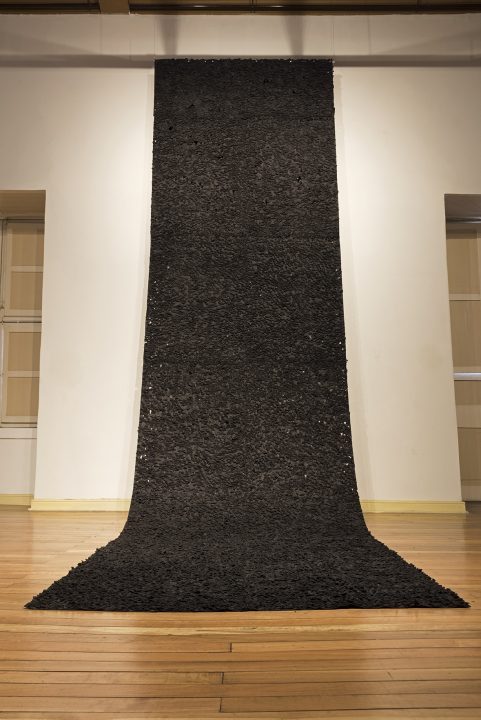
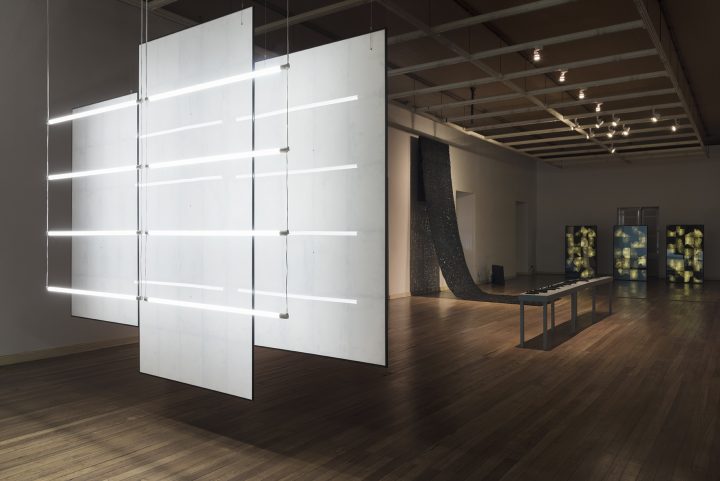
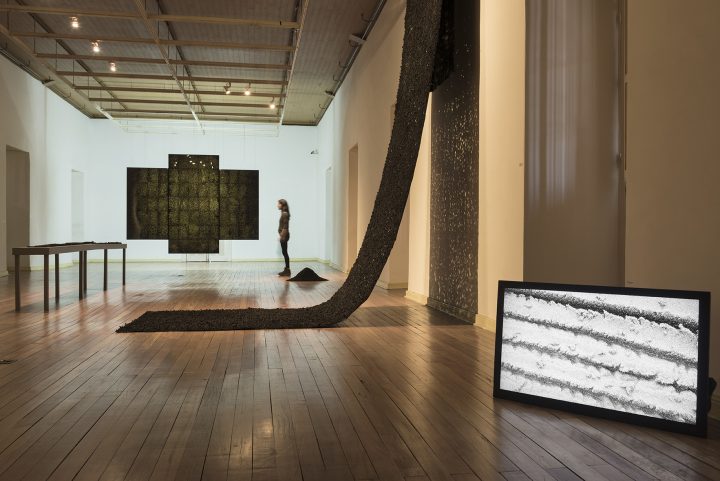

 Español
Español